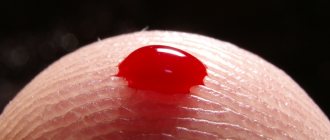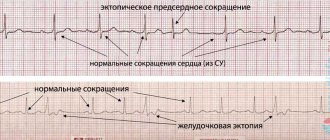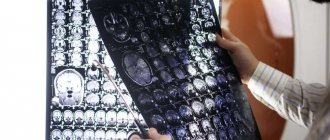1.What is hemophilia and its causes
Hemophilia
is a blood disorder in which the blood does not clot properly. Typically, this occurs because a person with hemophilia lacks a certain clotting factor. This means it can be difficult to stop bleeding. Moreover, this can apply to both ordinary bleeding from wounds and falls, and bleeding during some operations. It also happens that some people with hemophilia begin to bleed internally for no apparent reason.
There are two main types of hemophilia:
- Hemophilia A
is caused by the absence of active blood clotting factor VIII. According to statistics, approximately 1 in 5,000 male infants are born with type A hemophilia. Blood clotting factor VIII is a plasma protein. The greater the deficiency, the more severe the symptoms of hemophilia. - Hemophilia B
(Christmas disease) is caused by a lack of active blood clotting factor IX in the body. This form of hemophilia is less common and is diagnosed in about 1 in 30,000 male infants.
Hemophilia is usually inherited and almost always affects men. In very rare cases, a person can develop hemophilia without a family history. This is called acquired hemophilia, and it occurs in both men and women.
Causes of hemophilia
Hemophilia, both type A and B, occurs due to a defect in a pair of chromosomes that affects the presence of a certain blood clotting factor in the body and how it works. In the case of acquired hemophilia, the blood clotting factor stops working as it should because it begins to be attacked by antibodies that the body itself produces.
A must read! Help with treatment and hospitalization!
2. Symptoms of the disease
Symptoms of hemophilia may include:
- Bleeding in a joint or muscle area that causes pain and swelling;
- Abnormal bleeding after wounds or surgery;
- Bruising;
- Frequent nosebleeds;
- Blood in the urine;
- Bleeding after dental surgery.
Some people with mild hemophilia may not experience all of these symptoms, especially as the person gets older. However, in infants it is usually possible to diagnose hemophilia based on some signs. So, signs of hemophilia in infancy may be an unusual reaction to the most common vaccination - intramuscular bleeding and serious bruising. Or, for example, bleeding that begins after cutting the umbilical cord and does not stop for a long time (but this happens very rarely).
Visit our Therapy page
Questions and answers
Is it possible to be completely cured of hemophilia?
Drug therapy and blood or plasma transfusion procedures relieve acute pathology syndromes. Sometimes patients are prescribed long-term use of medications selected based on medical history. But completely eliminating the symptoms of hemophilia remains impossible.
Does hemophilia pose a threat to a child's life?
If parents seek medical advice in a timely manner, the baby will be out of danger. A quick correct diagnosis and initiation of treatment will allow the child not to limit himself in physical activity and games.
Can a boy with hemophilia pass it on to his sons?
The risk of having children with hemophilia from a father with bleeding problems is minimal. The disease will be inherited by sons only if their mother is one of the carriers of the altered gene.
3.Diagnostics and treatment
Diagnosis of hemophilia
If your doctor thinks you or your child may have a blood clotting problem, a blood test will be done. The tests will help check your body's clotting factor, the type of hemophilia, and the severity of the disease. The severity of the problem depends on how much clotting factor the body produces and how often and under what conditions bleeding occurs.
Depending on this, there are several types of hemophilia:
- Mild hemophilia
. The blood clotting factor level is at least 5% of normal. This type of disease is not always noticed, especially if the person has not had heavy bleeding after a major injury or surgery. - Moderate hemophilia
- the level of blood clotting factor is from 1% to 5% of normal. Bleeding usually begins after a fall, sprain, or severe muscle strain. - Severe hemophilia
is diagnosed when blood clotting factor levels are below 1% of normal. People with severe hemophilia often bleed up to several times a week, without any obvious reason.
If you have a family history of hemophilia and you are planning a pregnancy, ask your doctor about special tests that can show whether you are a carrier of the disease (only women can be carriers).
Treatment of hemophilia
Hemophilia can be treated by replacing missing clotting factors
. During this therapy, clotting factor concentrate is injected into a vein. This replacement therapy can prevent or treat bleeding.
You may need to take special medications to treat hemophilia. Sometimes such drugs are prescribed before a certain procedure, which may be accompanied by blood loss - surgery or, for example, dental treatment at the dentist. In some cases, it is also necessary to take pain medications to help manage pain due to joint damage.
By following all your doctor's recommendations for treating hemophilia, you will be able to lead a normal life with this disease. As a rule, modern clinics have the necessary resources to help patients with hemophilia.
About our clinic Chistye Prudy metro station Medintercom page!
Hemophilia
Which doctors should I contact?
A hematologist treats patients with hemophilia. To confirm the presence of hemorrhagic manifestations or their consequences, consultation with specialists is also recommended. According to indications, consultations are possible:
- neonatologist or;
- geneticist;
- traumatologist-orthopedist;
- ;
- ;
- ;
- ;
- dentist
Treatment of hemophilia
Hemophilia is an incurable disease, so the main goal of therapy is to relieve symptoms. The main principle of treatment is specific replacement therapy with coagulation factor concentrates. Factor concentrates are made either from human plasma (plasma) or they are genetically modified (recombinant).
When products are made from plasma, a number of measures are taken to ensure that the product is free of viral infection and that patients will not become infected with viruses such as hepatitis C or HIV. To this end, strict criteria are applied to the selection of plasma donors. In addition, manufacturers have developed various methods to purify and inactivate viruses during the blood product manufacturing process. However, patients should be aware that there is a theoretical possibility of infection through the use of plasma products.
Recombinant drugs are created from living cells, such as monoclonal antibodies. They are considered technologically more advanced and carry a lower risk of viral infection.
Currently, there is no basis for a preferential choice between plasma-derived or recombinant drugs. Coagulation factor concentrates are administered intravenously. However, in about 30% of patients with severe hemophilia, the body begins to produce antibodies, which makes treatment extremely difficult, and in some cases impossible.
There are two types of specific therapy - preventive and treatment upon the occurrence of bleeding (on demand). In all cases, it is recommended to immediately use a sufficient dose and observe the frequency of administration of the drug.
For the treatment of hemophilia, newer drugs include fitusiran (reduces the production of the natural anticoagulant protein, antithrombin) and concizumab (increases the production of thrombin). Gene therapy using an adenoviral vector to deliver the factor VIII or IX gene is also being tested in clinical trials.
Complications
Serious complications occur with severe and moderate hemophilia and most often manifest themselves in the form of joint destruction and the development of arthritis. Bleeding into the joint leads to the destruction of its normal tissues and the development of chronic arthritis, which is very painful and leads to dysfunction of the joint. Hemorrhages in the joints are also observed in children from 2-3 years of age. Most often, large joints are affected - knees, elbows, ankles. If bleeding continues, the risk of disability and limitation of movement in the joint is extremely high (in the worst case, a person may lose a limb).
In addition to the negative impact on a person’s quality of life, hemorrhages often become life-threatening if they occur in vital organs, such as the brain.
Prevention of hemophilia
Preventive replacement therapy with blood coagulation factor concentrates is a necessary condition for maintaining the physical and psychological health of patients with severe and moderate hemophilia. Prophylactic treatment is usually given to children to reduce the risk of bleeding and joint damage. Recently, prevention has been prescribed to older people for the same purpose. Prevention involves infusion of clotting factor on a regular basis (every other day) to maintain normal blood clotting in the patient and prevent spontaneous bleeding.
Children with hemophilia must be protected from injury and tooth extraction prevented through careful oral hygiene and qualified dental care.
Before surgery or tooth extraction, patients undergo factor replacement therapy (preferably using a recombinant drug).
Young people should realize that maintaining physical activity is very important to strengthen muscles, ligaments and joints. Muscle weakness and poor coordination significantly increase the likelihood of joint injury and subsequent development of inflammation (arthritis). Good physical shape and a strong muscle frame reduce the risk of sporadic bleeding. The optimal sport for people with hemophilia is swimming.
People with hemophilia are encouraged to wear a medallion with information about the disease. This can save lives in a critical situation.
To prevent bleeding, hemophiliacs should avoid aspirin and nonsteroidal anti-inflammatory drugs because they slow platelet function.
Vaccinations do not pose a great danger to a person with hemophilia. Moreover, the list of mandatory ones includes a vaccine against hepatitis B. Most medications should still be taken orally due to the risk of bleeding when administered intramuscularly.
Sources:
- Clinical guidelines for the diagnosis and treatment of hemophilia. National Society of Hematology. Under the leadership of academician V.G. Savchenko // – Moscow. – 2021. – 34 p.
- Rumyantsev A.G., Rumyantsev S.A., Chernov V.M.. Hemophilia in the practice of doctors of various specialties // - Moscow. – 2012. – 132 p.
- .
- .
IMPORTANT!
The information in this section cannot be used for self-diagnosis and self-treatment. In case of pain or other exacerbation of the disease, diagnostic tests should be prescribed only by the attending physician. To make a diagnosis and properly prescribe treatment, you should contact your doctor.
4.What can be done at home for hemophilia?
To prevent bleeding and improve your well-being, patients with hemophilia can recommend the following:
- Ask your doctor about how to manage bleeding if you have hemophilia;
- Maintain a healthy weight. Additional stress on joints due to excess weight can cause bleeding in hemophilia;
- Choose forms of physical activity with caution. It is better to give preference to swimming and other sports that do not put unnecessary stress on the joints;
- Consult your doctor before taking any medications. And do not take aspirin, ibuprofen or other non-steroidal anti-inflammatory drugs because they affect blood clotting.
- Organize your living space to avoid injuries and accidents as much as possible.










